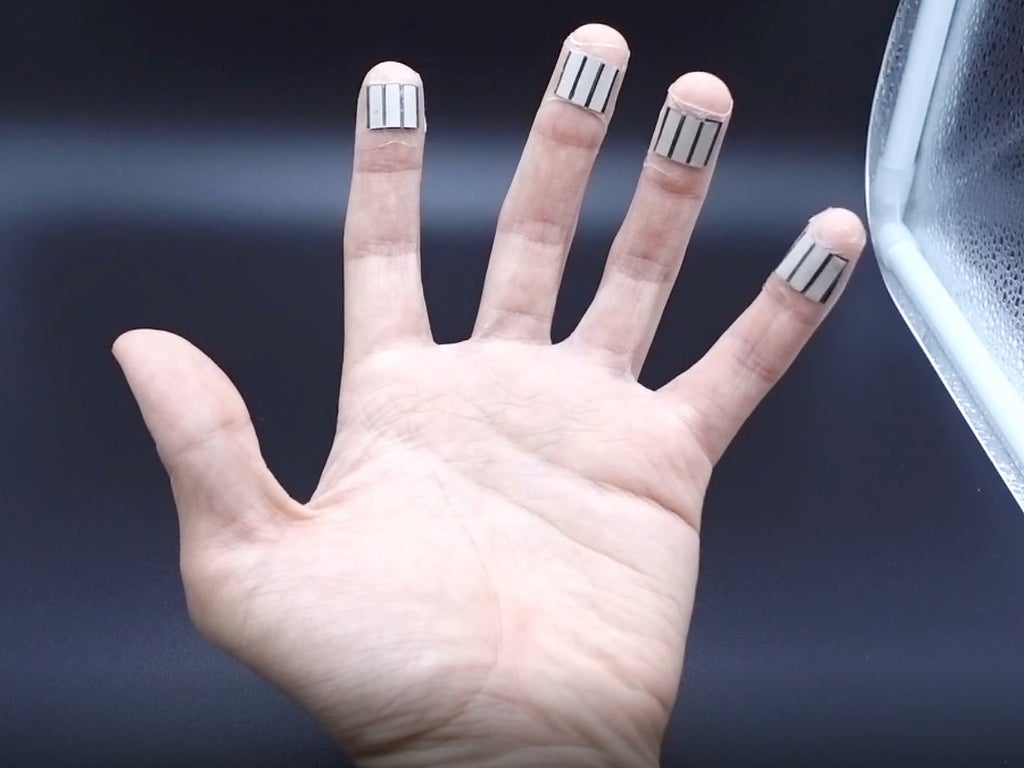[ad_1]

Scientists have invented the world’s most efficient on-body energy harvester, capable of powering devices from a person’s fingertips.
Engineers at the University of California San Diego discovered that a thin, flexible strip placed on the skin could generate enough electricity from a wearer’s sweat to power wearables and other devices.
As well as generating electricity from sweat, the biofuel cells (BFC) can also harvest extra power from light finger presses from activities like typing or playing the piano.
“We envision that this can be used in any daily activity involving touch, things that a person would normally do anything while at work, at home, while watching TV or eating,” said Joseph Wang, a professor of nanoengineering at the UC San Diego Jacobs School of Engineering.
“The goal is that this wearable will naturally work for you and you don’t even have to think about it.”
Professor Wang and other authors of a study detailing the system described it as the “holy grail” of energy harvesters as it does not rely on any external, irregular energy sources like sunlight or movement.
Fingertips provide the perfect location for the strips, as they have the highest concentration of sweat glands compared to anywhere on the human body.
“Generating more sweat at the fingers probably evolved to help us better grip things,” said first co-author Lu Yin.
“Sweat rates on the finger can reach as high as a few microlitres per square centimetre per minute. This is significant compared to other locations on the body, where sweat rates are maybe two or three orders of magnitude smaller.”
The BFCs can produce 300 millijoules of energy per square centimetre, representing a significant step forward for on-body electricity harvesters which previously relied on intense exercise or movement to generate any significant energy.
As part of their experiments, the researchers used the device to power a Vitamin C sensing system, but claim that it could be adapted to power health and wellness applications like glucose metres.
“We want to make this device more tightly integrated in wearable forms, like gloves,” Mr Yin said.
“We’re also exploring the possibility of enabling wireless connection to mobile devices for extended continuous sensing. There’s a lot of exciting potential.”
The study was published in the scientific journal Joule on Tuesday.
[ad_2]
Source link